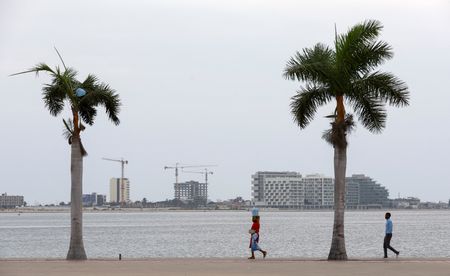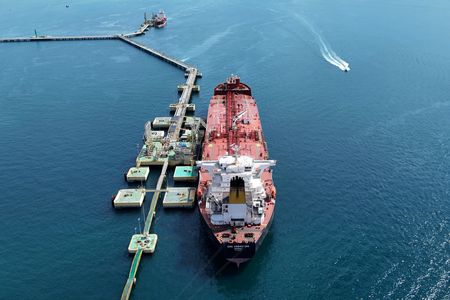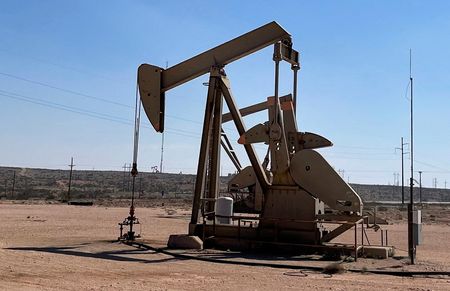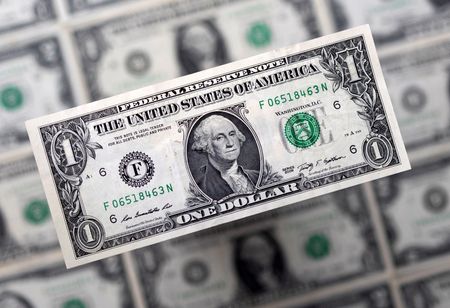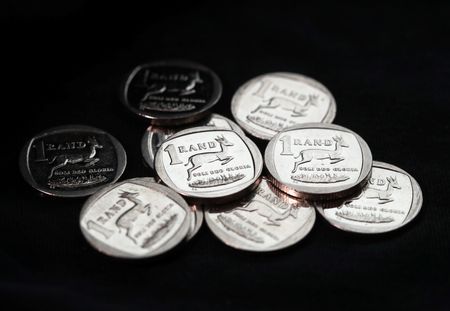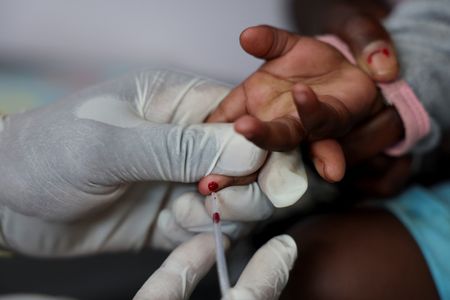By Duncan Miriri, Miguel Gomes
NAIROBI/LUANDA (Reuters) -The International Monetary Fund has cut its 2025 growth forecast for Angola to 2.4%, mainly due to concerns about the impact of lower crude oil prices on the government’s finances and higher interest rates in global markets.
Here is an explanation of Angola’s debt and economic challenges:
WHY ARE INVESTORS CONCERNED ABOUT ANGOLA?
Like other small African economies, the Southern African nation’s dollar bonds were pummelled during the market turmoil that followed the imposition of U.S. trade tariffs at the start of April.
But concerns rose further in April when JPMorgan demanded additional security of $200 million from the government for its $1 billion financing backed by Angola’s dollar bonds.
The worries were also fuelled by Angola’s heavy exposure to the slide in the price of oil that accompanied the market turmoil.
Angola is sub-Saharan Africa’s second biggest exporter of crude oil which makes up 95% of exports, contributes 60% of the government’s revenues and is estimated to drive three quarters of all economic activities, IMF data showed.
The government has used a $70 per barrel assumption in its 2025 budget, but prices fell to as low as $60 during the height of the sell-off. Brent crude was trading at $63.93 on Thursday.
All this comes as the government faces external debt repayments of $9.1 billion this year, including a Eurobond maturing in November.
WHAT HAS THE GOVERNMENT SAID ABOUT THE CHALLENGES?
Finance Minister Vera Daves de Sousa has said the slide in the price of oil has increased the likelihood of the government turning to the IMF for a new loan deal.
The ministry of finance has also defended its borrowing leading up to this point, saying loans were used to build hospitals and boost the water supply.
The government has said it could review its spending plans if the pressure is sustained, and it will weigh its future debt financing carefully to ensure debt sustainability.
Total debt stood at close to 70% of GDP last year and it is projected to keep falling as a proportion of economic output, Angola’s debt sustainability analysis shows.
However, the IMF classifies it as being at a high risk of distress, mainly due to exposure to foreign exchange risks. About 80% of Angola’s debt is in foreign currency, including oil-backed loans from China.
The government says it has accelerated repayments to China and can weather the storm from the lower oil prices. Angola lacks a deep local debt market it can turn to when the external financing options become tighter.
A push to remove fuel subsidies last year to relieve pressure on finances did not attain the desired savings, the IMF said.
WHAT IS THE SOCIAL IMPACT, AND THE GOVERNMENT’S OPTIONS?
Angola’s spending on social services has shrunk by 55% since 2015 due to the growing debt burden, says Debt Justice, a London-based campaign group.
The pressure has also curbed its ability to invest in much-needed infrastructure projects, analysts said. Angola is a key part of a new, U.S.-backed transport corridor called Lobito, linking critical minerals-exporting Democratic Republic of the Congo and Zambia to Angola’s Atlantic coast.
The government has been holding talks with IMF officials this week, including a meeting between IMF Africa head Abebe Aemro Selassie and Angola’s President Joao Lourenco in Luanda. Information on whether Angola is seeking a new lending programme have not been provided yet.
(Reporting by Duncan Miriri in Nairobi and Miguel Gomes in Luanda; Editing by Karin Strohecker and Toby Chopra)

